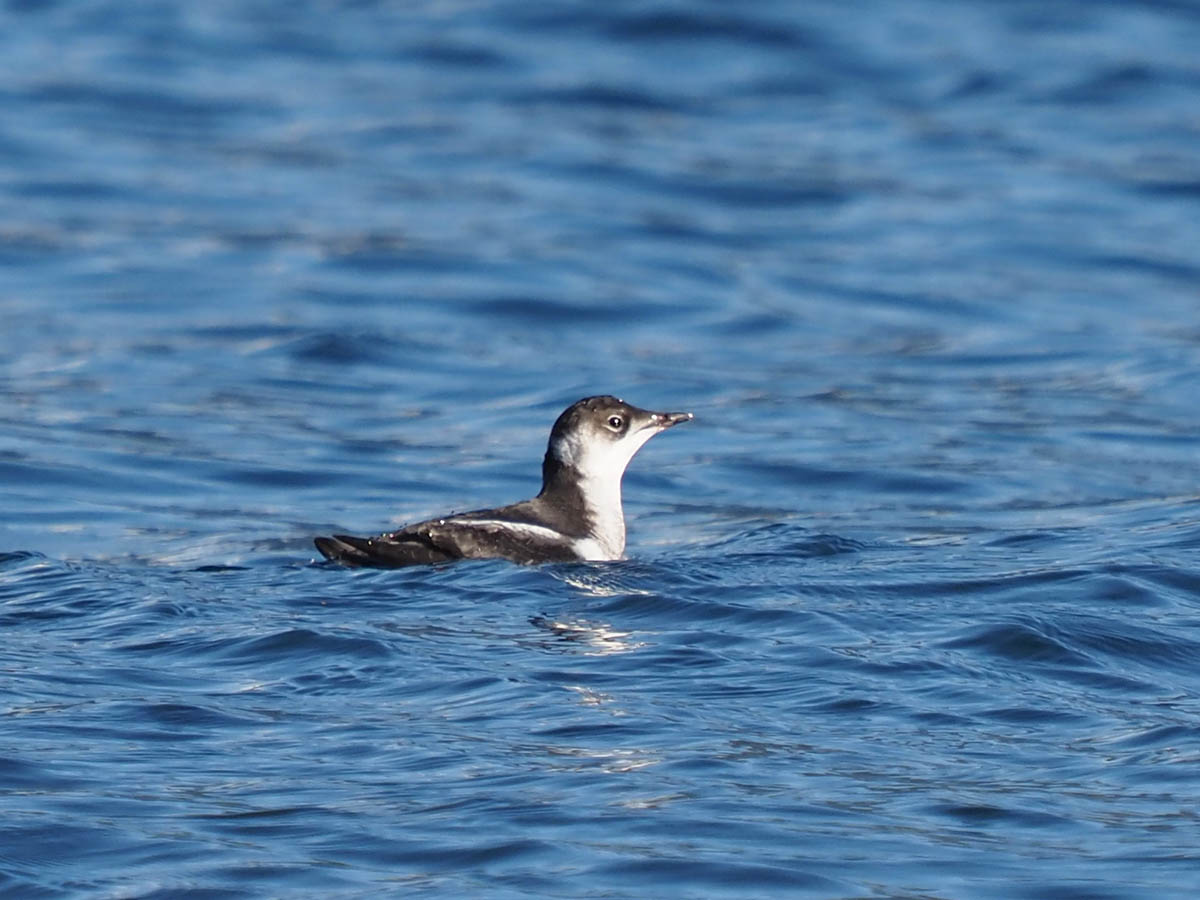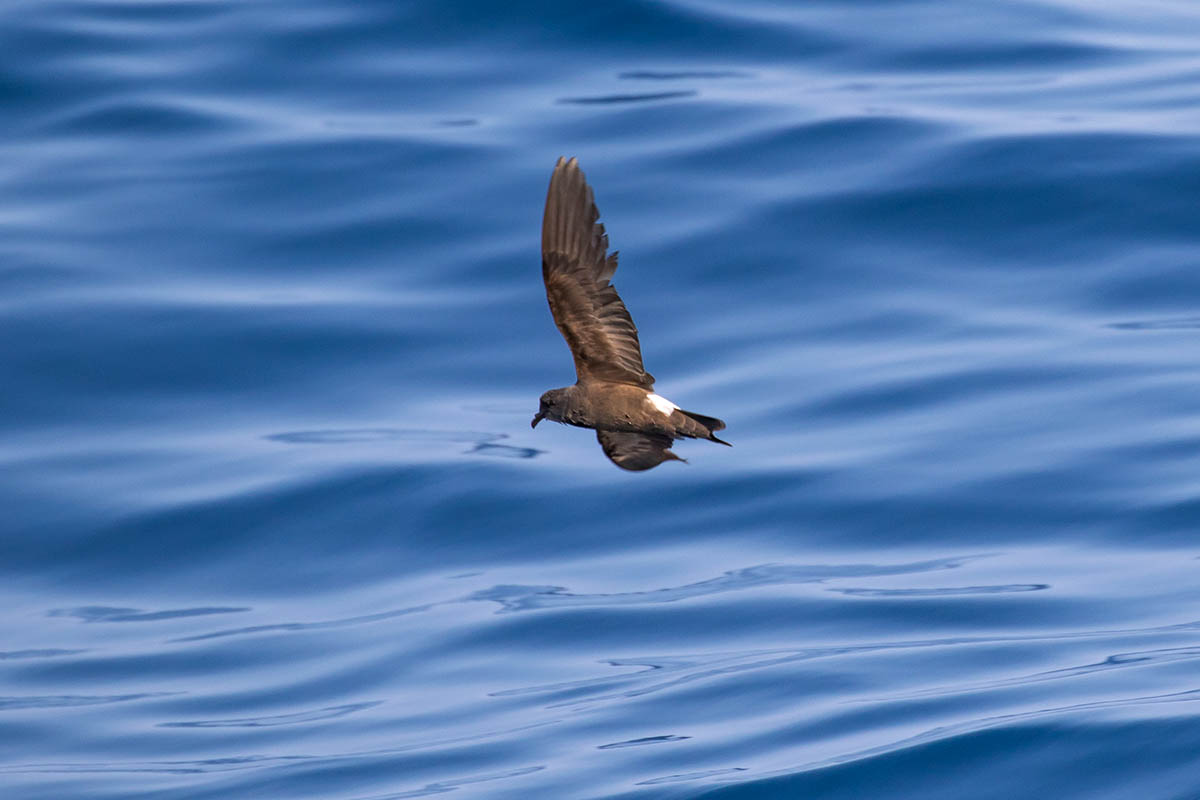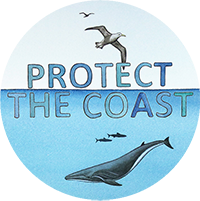Birds

Leach’s Storm-petrel, by Ryan Mandelbaum/Flickr/Flickr, CC-Attr-ShareAlike 2.0
The birds who will be most affected by offshore energy development are the pelagic birds—that is, birds who spend a large portion of their lives on the open ocean. Many of these birds will come ashore to breed, but spend the majority of their non-breeding and feeding time farther out to sea.
Below we list the pelagic birds who may be heavily impacted by offshore energy development, and particularly offshore wind energy development. We also highlight a few of these birds to give those unfamiliar with these birds a sense of their habits and activity.
The proposed Pacific Northwest offshore wind energy areas will occupy sites in the feeding grounds of many Pacific Northwest bird species. These sites are within the migratory Pacific Flyway region and will add stress to many threatened and endangered bird species who use the flyway for migration. Birds with coastal habitats are particularly vulnerable. Unfortunately, information about bird mortality at offshore wind energy areas is scarce because of the difficulty of detecting collisions and recovering dead birds at sea.
Wind energy areas will impact birds in a number of different ways, including disturbance from increased boat traffic; loud noises during exploration, testing, and construction phases; ongoing noise from the turbines themselves; and of course the risk of collision with the turbine blades. The tips of large wind turbine blades, such as those proposed for the Pacific Northwest, can reach speeds of 150 mph, especially on windy days.
A 2021 report on the impacts of offshore wind development in the North Sea found that sea birds are vulnerable to both displacement and collision. Like most studies, this report suggests “further research” is necessary to understand the true impacts of wind energy development on seabirds.
Our position at Protect The Coast PNW is that sea birds, and all marine life, have a right to exist and flourish in their natural habitat free from the interference of human infrastructure. While further research could help us understand the impacts of wind energy on seabirds, it is not necessary to understand that no offshore energy development at all is best for seabirds and other marine life. A Pacific Coast free of human infrastructure and energy development is what we advocate for.
Albatrosses
- Black-footed Albatross
- Laysan Albatross
- Short-tailed Albatross
Storm-petrels
- Leach’s Storm-petrel
- Fork-tailed Storm-petrel
Fulmars and Shearwaters
- Northern Fulmar
- Pink-footed Shearwater
- Buller’s Shearwater
- Flesh-footed Shearwater
- Short-tailed Shearwater
- Sooty Shearwater
Alcids
- Common Murre
- Pigeon Guillemot
- Marbled Murrelet
- Ancient Murrelet
- Cassin’s Auklet
- Tufted Pu
- Horned Pu
- Rhinoceros Auklet
Cormorants
- Brandt’s Cormorant
- Double-crested Cormorant
- Pelagic Cormorant
Jaegers, Kittiwakes, and Gulls
- Pomarine Jaeger
- Parasitic Jaeger
- Long-tailed Jaeger
- South Polar Skua
- Black-legged Kittiwake
- Bonaparte’s Gull
- Sabine’s Gull
- Common Tern
- Arctic Tern
Pelicans
- Brown Pelican
Phalaropes
- Red Phalarope

Marbled murrelets are pigeon-sized seabirds that live along the Pacific coast of North America from California to Alaska. The marbled murrelet is a secretive seabird who nests high up in old-growth forests in groves up to thirty miles inland, and forages on small fish and krill in nearby marine waters. The murrelets feed up to forty to fifty miles off the coast, often at upwellings, and in quiet, protected bays.
Marbled murrelets are listed as a state Endangered species in WA state, and listed as Threatened by the U.S. Fish and Wildlife Service under the Endangered Species Act due to old-growth logging all along the Pacific Northwest coast and warming ocean temperatures. The murrelets are also heavily impacted by human activity such as commercial fishing and increased boat traffic and pollution.
Description adapted from Conservation Northwest, Wikipedia and DNR Washington’s Marbled Murrelet Fact Sheet.
Image: iNaturalist Cc-by-sa-4.0

Description adapted from Wikipedia and U.S. FWS Seabirds of the Pacific Northwest.
Image by Ryan Mandelbaum/Flickr Cc-by-sa-2.0
